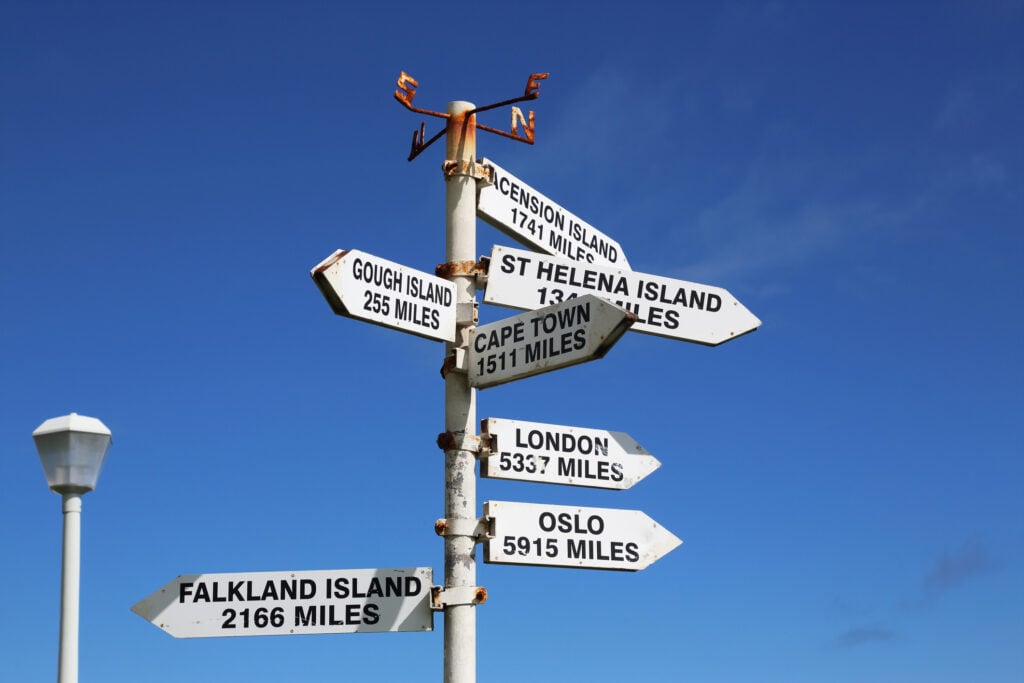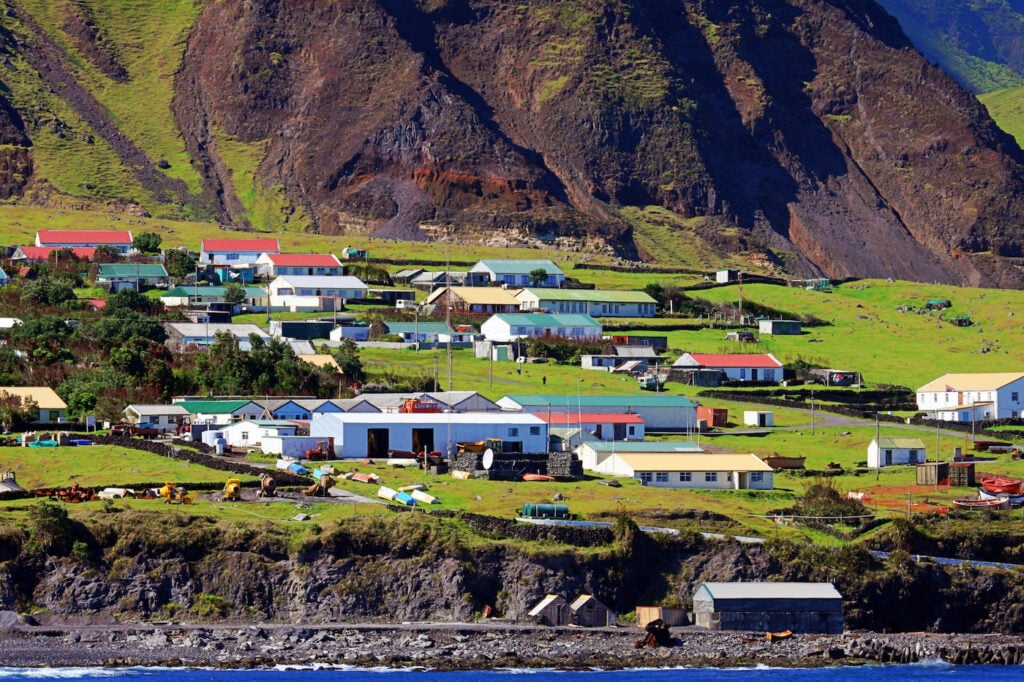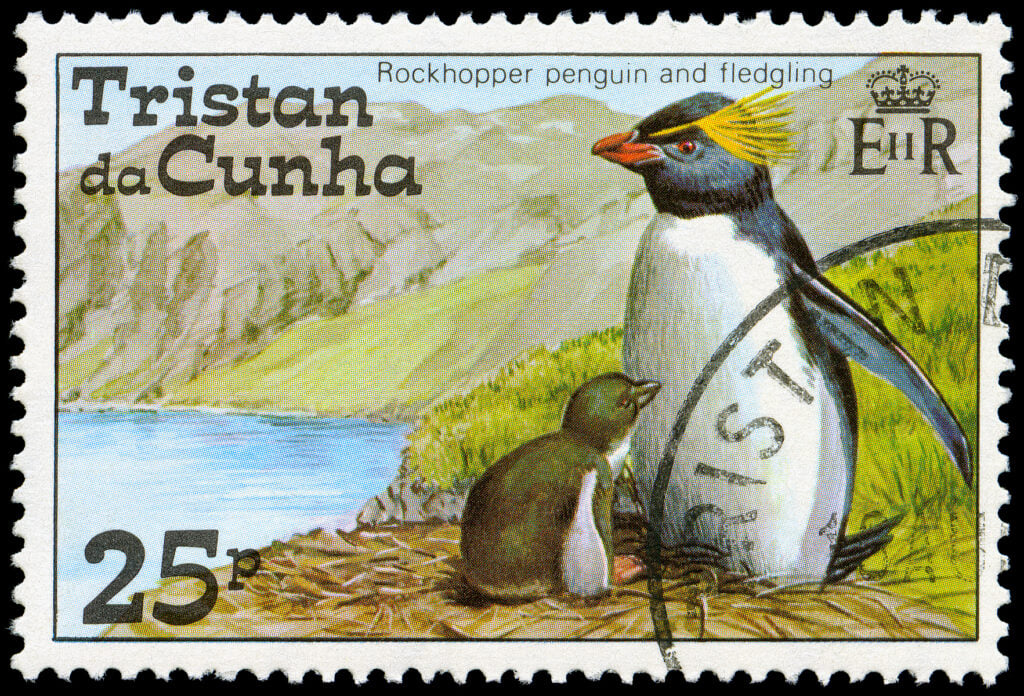In the South Atlantic Ocean, some 1,750 miles from the coast of South Africa and over 2,200 miles from South America, sits a group of islands called the Tristan Archipelago. The largest island of the group is Tristan da Cunha, and with 250 permanent inhabitants, it is the most remote inhabited island in the world.
But that’s only part of what makes this place so interesting…

Despite human life on the island being its main claim to fame, Tristan da Cunha has a fascinating past and present. The island, classified as a British Overseas Territory, is an active volcano as well as a site of unique biodiversity, home to remarkable wildlife across land, sea and air.
The 250 residents of the island largely live in a settlement called Edinburgh Of The Seven Seas. Without an airport, it is only accessible by sea. Its existence can be traced back to settlers first arriving two centuries ago, and while now the inhabitants are all interrelated, there remain seven family names among them – Glass, Swain, Hagan, Green, Repetto, Lavarello and Rogers – as their ancestry is more diverse. Consisting of Scottish soldiers, Dutch seamen, Italian castaways and an American whaler, all seven of the last names can be traced back to the original settlers on the island.

During the last two hundred years, the society has grown into a small, self-sustaining community. Food is grown in an area known as “The Patches”, three miles away from the Edinburgh settlement but connected by the island’s only road. Along this road runs the world’s most remote timetabled bus service. It also provides access to Camogli Health Centre, catering to Tristan da Cunha’s medical and dental needs, and St Mary’s School, educating the island’s roughly 30-strong population of 5-16-year-olds. Serious medical cases, including childbirth, usually entail the week-long boat journey to Cape Town, while further education is also pursued in either the UK or South Africa, with an education fund helping students travel.
The island is further served by one police station (with one police officer), one post office, one supermarket, one café, one internet café, one tourism center and, most importantly, one pub. Known as the Albatross Bar, it is located in the island’s Prince Phillip Hall.

The residents on the island earn their living through various means. Fishing is a large industry, particularly for Tristan da Cunha’s renowned lobster which is then exported around the world, as is farming. Crafts, conservation work and tourism also keep the society self-sustaining.
Read More: This is the world’s most remote lighthouse
“Tristanians will do business with the world; we understand it’s important to be in the world if you want something from it,” Conrad Glass, former Chief Islander, told the New York Times. “But the world can keep its bombs and bird flu. Whatever we’ve got here is under our control. It’s the remoteness of the island that has jelled us and brought us all together.”
The rest of the islands in the Tristan Archipelago are uninhabited. They consist of Gough Island, the aptly named Inaccessible Island (these two form a UNESCO World Heritage Site), Nightingale Island, Stoltenhoff and Alex (or Middle) Island, all of which are important global locations of biodiversity.

Wildlife on the island includes 200,000 rockhopper penguins and 300,000 sub-Antarctic fur seals. Permanent sea-dwellers include various species of shark – blue, shortfin mako and seven-gill – and whale – fin, humpback and sperm – as well as dolphins. From the air, Tristan da Cunha is home to albatrosses and over five million shearwaters.
In January 2017, the island’s wildlife was the subject of an extensive study between Pristine Seas, the Royal Society for the Protection of Birds (RSPB) and the Tristan da Cunha government. Some of the most important discoveries were in its marine and deep-sea environments, about which little was previously known. The researchers found more blue sharks than at any other location they had studied, a sign that migratory species (who are the most heavily fished sharks in the world due to the value of their fins) may move towards the island for refuge from hunters.

The island’s landscape is spearheaded by the volcano, Queen Mary’s Peak. The highest point on the island, it has not erupted since 1961, when residents were forced to evacuate to the UK for two years until Tristan da Cunha was safe to return to. At the top is a heart-shaped lake.
Tristan da Cunha is administered as a group of the UK’s overseas territories, also including St. Helena and Ascension Island. Its Governor is HE Nigel Phillips, who is based on St. Helena, and an Administrator, HH Sean Burns. There is a Tristan Island Council, and a wonderfully named ‘Chief Islander’. That title currently belongs to The Hon. James Glass. Visiting the island is only possible after you’ve been granted permission by the Island Council.





